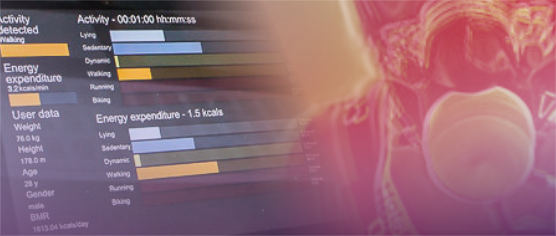M. Altini, J. Penders, R. Vullers and O. Amft

Several methods to estimate Energy Expenditure (EE) using body-worn sensors exist, however quantifications of the differences in estimation error are missing. In this paper, we compare three prevalent EE estimation methods and five body locations to provide a basis for selecting among methods, sensors number and positioning. We considered (a) counts-based estimation methods, (b) activity-specific estimation methods using METs lookup, and (c) activity-specific estimation methods using accelerometer features. The latter two estimation methods utilize subsequent activity classification and EE estimation steps. Furthermore, we analyzed accelerometer sensors number and on-body positioning to derive optimal EE estimation results during various daily activities. To evaluate our approach, we implemented a study with 15 participants that wore five accelerometer sensors while performing a wide range of sedentary, household, lifestyle, and gym activities at different intensities. Indirect calorimetry was used in parallel to obtain EE reference data. Results show that activity-specific estimation methods using accelerometer features can outperform counts-based methods by 88% and activity-specific methods using METs lookup for active clusters by 23%. No differences were found between activity-specific methods using METs lookup and using accelerometer features for sedentary clusters. For activity-specific estimation methods using accelerometer features, differences in EE estimation error between the best combinations of each number of sensors (1 to 5), analyzed with repeated measures ANOVA, were not significant. Thus, we conclude that choosing the best performing single sensor does not reduce EE estimation accuracy compared to a five sensors system and can reliably be used. However, EE estimation errors can increase up to 80% if a non-optimal sensor location is chosen.
Tags: Accelerometers, Accuracy, Estimation error, Sensor phenomena and characterization, Vectors
